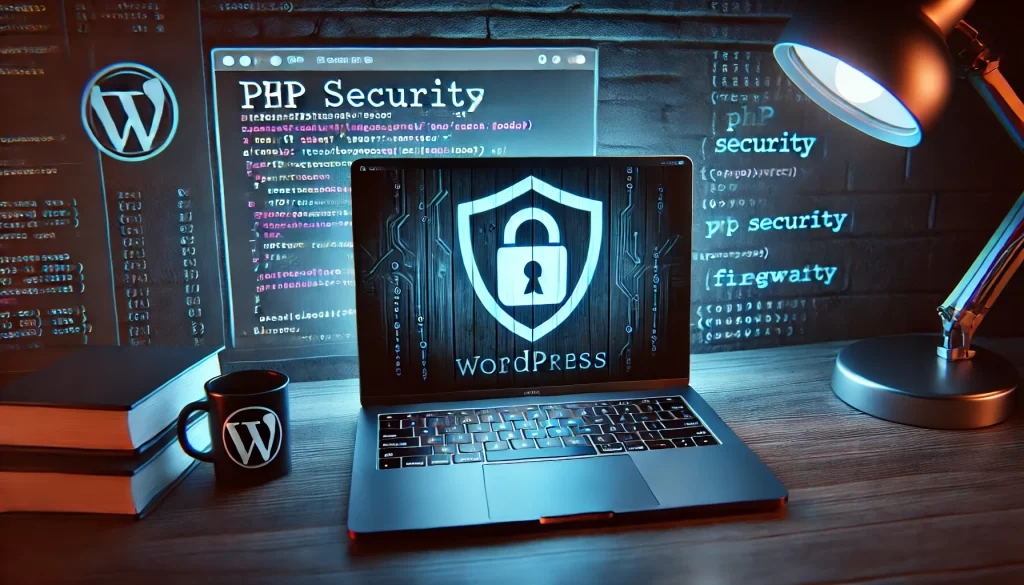Estimated Reading Time: 4 min
Here are some essential WordPress PHP functions for security to help protect your website from vulnerabilities, attacks, and unauthorized access.
1. Disable File Editing in the Admin Panel
Hackers can exploit the Theme & Plugin Editor to insert malicious code. Disable it using:
define('DISALLOW_FILE_EDIT', true);
Add this to your wp-config.php file.
2. Disable XML-RPC to Prevent DDoS Attacks
XML-RPC is often exploited for brute force and DDoS attacks. Disable it using:
add_filter('xmlrpc_enabled', '__return_false');
For better security, disable access completely via .htaccess:
<Files xmlrpc.php>
Order Deny,Allow
Deny from all
</Files>
3. Limit Login Attempts to Prevent Brute Force Attacks
function limit_login_attempts($user, $username, $password) {
if (get_transient('login_attempts_' . $username) >= 5) {
return new WP_Error('too_many_attempts', __('Too many failed login attempts. Please try again later.'));
}
$user = get_user_by('login', $username);
if (!$user || !wp_check_password($password, $user->user_pass, $user->ID)) {
set_transient('login_attempts_' . $username, (get_transient('login_attempts_' . $username) ?: 0) + 1, 15 * MINUTE_IN_SECONDS);
}
return $user;
}
add_filter('wp_authenticate_user', 'limit_login_attempts', 10, 3);
This function limits login attempts and locks out users after five failed attempts.
4. Hide WordPress Version
Attackers can use the WordPress version to target known vulnerabilities. Hide it using:
remove_action('wp_head', 'wp_generator');
function remove_version_strings($src) {
return remove_query_arg('ver', $src);
}
add_filter('script_loader_src', 'remove_version_strings');
add_filter('style_loader_src', 'remove_version_strings');
5. Disable Directory Browsing
Prevent users from accessing directories by adding this to your .htaccess file:
Options -Indexes
6. Force Strong Passwords for Users
function enforce_strong_passwords($errors, $sanitized_user_login, $user_email) {
if (!preg_match('/^(?=.*[a-z])(?=.*[A-Z])(?=.*\d)(?=.*[@$!%*?&])[A-Za-z\d@$!%*?&]{8,}$/', $_POST['pass1'])) {
$errors->add('weak_password', __('Your password must be at least 8 characters long and include uppercase, lowercase, a number, and a special character.'));
}
return $errors;
}
add_filter('registration_errors', 'enforce_strong_passwords', 10, 3);
7. Auto-Logout Inactive Users
function auto_logout_idle_users() {
if (is_user_logged_in() && (time() - get_user_meta(get_current_user_id(), 'last_activity', true)) > 1800) {
wp_logout();
wp_redirect(home_url());
exit();
}
update_user_meta(get_current_user_id(), 'last_activity', time());
}
add_action('init', 'auto_logout_idle_users');
This function logs out inactive users after 30 minutes of inactivity.
8. Disable User Enumeration
Hackers often enumerate users to find admin usernames. Disable it using:
if (!is_admin()) {
add_action('init', function() {
if (isset($_REQUEST['author'])) {
wp_redirect(home_url());
exit;
}
});
}
9. Restrict Access to the WordPress Admin Panel
function restrict_admin_panel() {
if (!current_user_can('administrator') && is_admin()) {
wp_redirect(home_url());
exit;
}
}
add_action('init', 'restrict_admin_panel');
This prevents non-admin users from accessing the WordPress admin area.
10. Change the Default WordPress Login URL
Using a plugin like WPS Hide Login is the easiest way to change your login URL. If you want a manual solution, modify .htaccess to block access to wp-login.php for unknown IPs:
<Files wp-login.php>
Order Deny,Allow
Deny from all
Allow from 123.45.67.89
</Files>
Replace 123.45.67.89 with your IP.

11. Secure wp-config.php
Make wp-config.php inaccessible by adding this to .htaccess:
<Files wp-config.php>
Order Allow,Deny
Deny from all
</Files>
12. Disable PHP Execution in Uploads and Plugin Directory
Prevent attackers from running malicious scripts by creating an .htaccess file in /wp-content/uploads/ and /wp-content/plugins/ with:
<FilesMatch "\.(php|php5|php7|php8)$">
Order Deny,Allow
Deny from all
</FilesMatch>
13. Enable Two-Factor Authentication (2FA)
You can enforce Two-Factor Authentication for extra security using a plugin like Google Authenticator – Two Factor Authentication or WP 2FA.
14. Restrict REST API Access
By default, the REST API can expose user data. Restrict it using:
function disable_rest_api_for_non_logged_users($result) {
if (!is_user_logged_in()) {
return new WP_Error('rest_forbidden', __('REST API access restricted.'), array('status' => 403));
}
return $result;
}
add_filter('rest_authentication_errors', 'disable_rest_api_for_non_logged_users');
15. Scan for Malware Regularly
Use security plugins like Wordfence, Sucuri, or MalCare to scan your website for malware and vulnerabilities.
Final Thoughts
These WordPress security functions help safeguard your site against common vulnerabilities. Combine these with best practices like regular updates, backups, and using strong passwords for optimal security.
Would you like additional tips or help implementing these functions? 🚀

